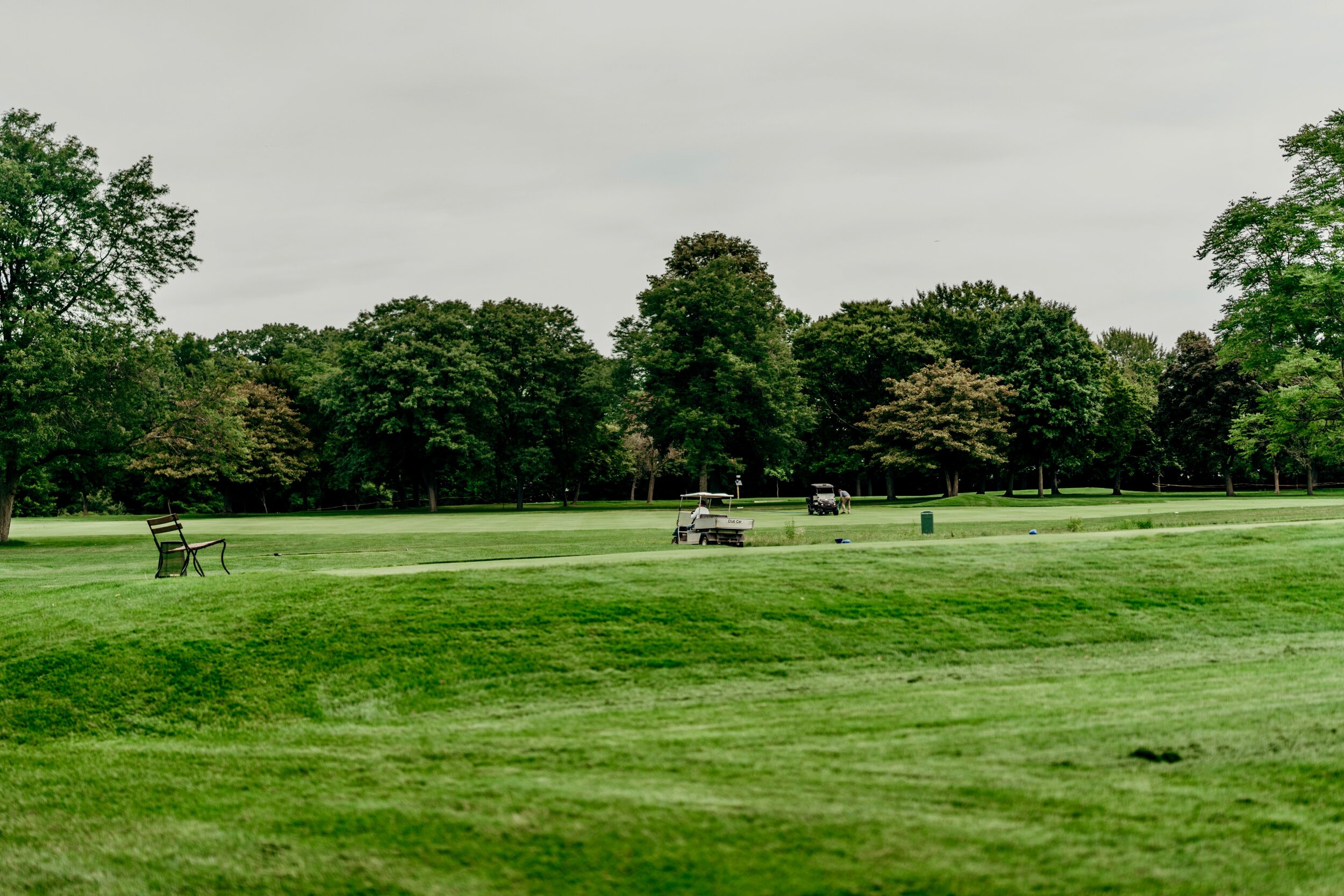Introduction

Through caring for thousands of acres of greenspace, we continuously seek ways to contribute to our communities. This ranges from developing pollinator and wildlife habitats to water conservation and water quality initiatives for the benefit of our local ecosystems.
Wisconsin, located in the heart of the Midwest, is known for its agriculture, education, sense of community, sports and vast outdoors. Golf plays a special role within the State, as the industry generates $2.4 billion in total economic output, produces 38,431 jobs, and contributes $772 million in wage income. (Economic Impact by State. 2008. WE ARE GOLF.) Wisconsin is home to approximately 500 golf facilities ranging from municipal to top-ranked courses, including Whistling Straits, Erin Hills, Milwaukee Country Club, Sand Valley, and Blackwolf Run. The state draws major championships including the Ryder Cup, US Open, PGA Championship, and many other professional events. The Wisconsin Golf Course Superintendents Association (WGCSA) and Northern Great Lakes (NGL) chapter of the GCSA are comprised of dedicated agronomists, golf maintenance professionals, industry partners, and educators who are responsible for the maintenance and sustainability of these golf courses throughout the state. The NGL represents members in the Northwoods area of Wisconsin, Minnesota, and Michigan.
The WGCSA, founded in 1930, and the NGL are dedicated to a quality golfing experience and committed to preserving natural resources through using science-based practices. We also share strong midwestern values and a commitment to our families and communities. Sharing knowledge and resources is critical for sustainable operations and environmental stewardship. We developed this guide of best management practices (BMPs) to serve as operating standards for superintendents to strive toward and an educational resource for all stakeholders. This guide was developed in collaboration with Radius Sports Group, a sustainability consulting firm, and has been reviewed by leaders in golf course management, construction, regulatory, and academic fields.
The document details 12 sections ranging from community engagement to irrigation to integrated pest management and water quality protection, to name a few. Each section contains BMPs and regulatory considerations, as well as local resources for additional information.
On behalf of the Wisconsin Golf Industry BMP steering committee, our WGCSA and NGL members, and allied partners, we hope that this BMP guide conveys the dedication and care that each Wisconsin superintendent has for the environment, our communities, and the game of golf.
Overview: Wisconsin’s Climate, Soils, and Ecology
Wisconsin is an ecologically diverse area with golf courses situated amongst rolling hills, across the plains, adjacent to rivers, next to farmlands, in urban settings, and on the coastlines. Two Great Lakes border the state to the North and East, blending beaches, bluffs, and plains in a way that is rarely found in the otherwise homogenous landscape of the Midwest. The Kettle Moraine State Forest, the Niagra Escarpment, and bluffs situated along the Mississippi and Lake Superior provide wildlife habitats, recreational areas, and breathtaking natural beauty. Wisconsin’s diverse geography makes golfing a unique experience, no matter where the golf course is located in the state.
Wisconsin Golf Course Locations
The state encompasses two Köppen Climate zones; most of the state is considered to be Warm Summer Humid Continental, but the Southern and Eastern edges are Hot Summer Humid Continental, as the mean temperature of its warmest month is higher than 71.6°F (22°C). Wisconsin experiences four distinct seasons and constant precipitation throughout the year. The most popular time of the year to enjoy golfing in the state is from late spring to early fall, when the weather is warmest.
Wisconsin’s most common biomes, or regions that consist of certain plant and animal species that thrive under the same environmental conditions, include coniferous forests, deciduous forests, and temperate grasslands. Wisconsin is different from the rest of the Midwest due to its relatively uneven topography, splitting the state into five distinct regions.
Ecological Landscapes of Wisconsin
The southwestern two-thirds of the state compromise the Western Uplands, characterized by rugged terrain, deep river trenches, and sharp elevation changes. The Eastern Ridges and Lowlands span from Green Bay to Wisconsin’s southern border on the eastern edge of the state. The lowland located between two elevated ridges is relatively flat and fertile. Most of Wisconsin’s population lives in this region, and a majority of its golf courses are located here due to the ideal environment. The Central Plain is flat and sandy and separates northern and southern Wisconsin. Almost the entirety of northern Wisconsin makes up the Northern Highland, which was once part of a mountain range that has now been smoothed through erosion and glaciation into a flat plain at a high altitude. Finally, the northern tip of Wisconsin comprises the Lake Superior Lowland, known for its gently sloping plain that has dropped due to faulting in the region.
In the northern part of Wisconsin, forested loamy soils dominate, with some pockets of silty or sandy soil. However, sandy and loamy red soils lie over dolomite in the Northern tip of the state. On Wisconsin’s eastern edge, soil is red clay and loam, but in its southeast region, soils are primarily silty. Most soils in western and central Wisconsin are also silty, but central Wisconsin consists of more prairies than the forested western region. When choosing where to place a golf course, understanding Wisconsin’s unique topography and soils are essential for its success.








